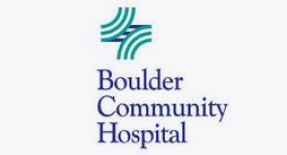April 28, 2022
Healthcare Consumer Segmentation: Industry Best Practices

Consumer segmentation is standard practice in industries like banking and retail, with the output used to drive things like new product ideas and improved customer engagement; but hospitals have not embraced this type analysis to inform their strategic decisions. However, with the consumer becoming crucial to a hospital’s competitive success, it is becoming a strategic imperative. Fortunately, many industries can provide a guidepost on developing a segmentation approach that is right for hospitals.
There are many ways to approach segmentation. The most obvious is by looking at demographic factors like age, gender, age, race, etc., and while this would be a relatively easy task to undertake, it will not provide the necessary level of understanding about how and why consumers select, use, and evaluate health care services.
Different organizations have provided different segmentation groups. One example that we have seen is in a white paper that was published by The Deloitte Center for Healthcare Solutions, The U.S. Health Care Market: A Strategic View of Consumer Segmentation, that outlined six segments:
- Casual & Cautious: “My health does not worry me, so I am not as engaged with the system, focused on prevention, or interested in online resources as I am cost-conscious, think that the health care system could improve, and am just not interested right now.”
- Content and Compliant: “I am happy with my health plan, hospitals, and doctors and see no reason to compare or switch. I trust my doctors to tell me what I need to know and make good treatment decisions for me. I follow-through with what my doctors recommend and I try to take good care of myself.
- Online & Onboard: “I like to learn as much as I can online and am very interested in innovative health technologies. I am happy with the care I get from my doctor, but am also open to alternative providers and different care settings. Making informed health decisions is important to ”
- Sick & Savvy: “Taking care of my health is a priority for me – I use a lot of healthcare services and products, try to make informed decisions in partnership with my doctor, and do my best to adhere to treatment plans. Online information and tools keep me highly informed.”
- Out & About: “I am independent – I like to make decisions on my own, prefer doctors who use alternative approaches/natural therapies, and switch medicines more often than most. I am not very satisfied with the doctors, hospitals, and health plan I have I would like to customize my plan.”
- Shop & Save: “In pursuit of good value – I switch health plans and doctors, use retail clinics, order medications online, and travel for care more often than most. I am cost-conscious and improving or maintaining my health is a priority. I am open to alternatives.”
Another is by c2b Solutions, who classifies their segments into five categories:
- Balance Seekers are proactive in their health and wellness-oriented
- Willful Endures live in the “here and now” and believe there are more important things to focus on than improving their health for the future
- Priority Jugglers are very busy with many responsibilities. Because of these responsibilities, Priority Jugglers may not take the time to invest in their well-being and are reactive when it comes to health issues.
- Self-Achievers are the most proactive when it comes to their wellness, investing what is necessary for their health and appearance
- Direction Takers believe their physician is the most credible resource for their healthcare needs
As you can see, there are many similarities across both companies’ segmentations. There are probably hundreds of generic categories that your hospital could suitably replicate. However, regardless of the selection or the names that you give each segment, the underlying methodology should be to look at “psychographic” dimensions of your patients – their priorities, attitudes, and values and not just segment based upon their demographics.
Once the segmentation is complete, you will have an understanding of your patient’s needs. This information will then allow you to identify gaps within your existing service offerings and customize your healthcare services to meet those needs. Your services will become more aligned with the specific needs of each particular segment and better position you against your traditional and emerging competitors.











